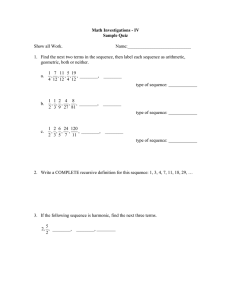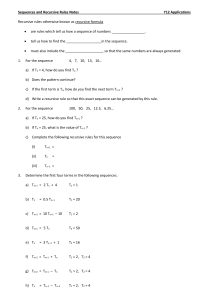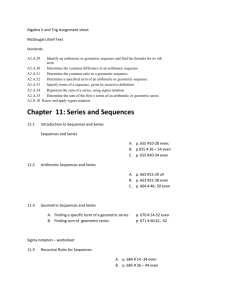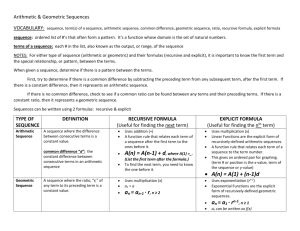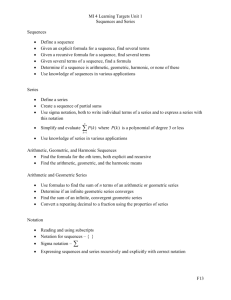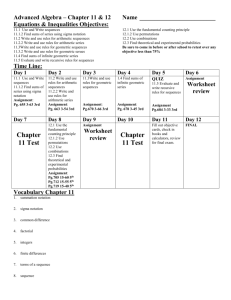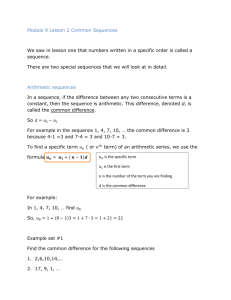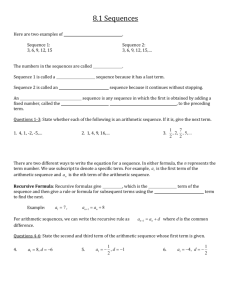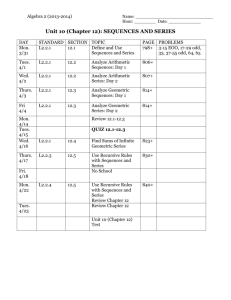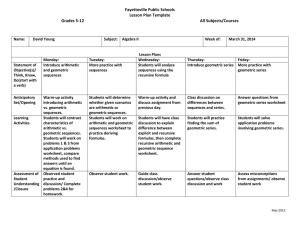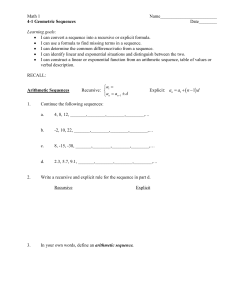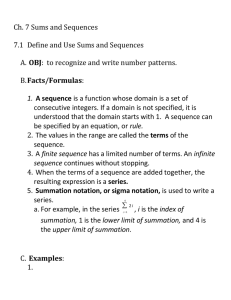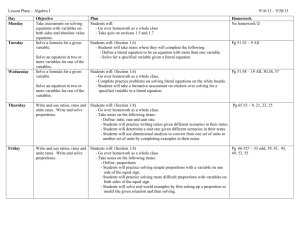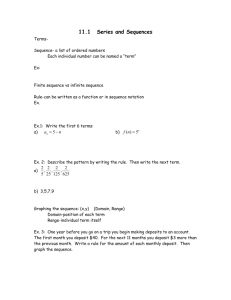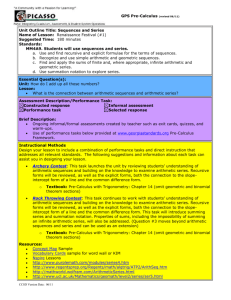Math Notes
advertisement
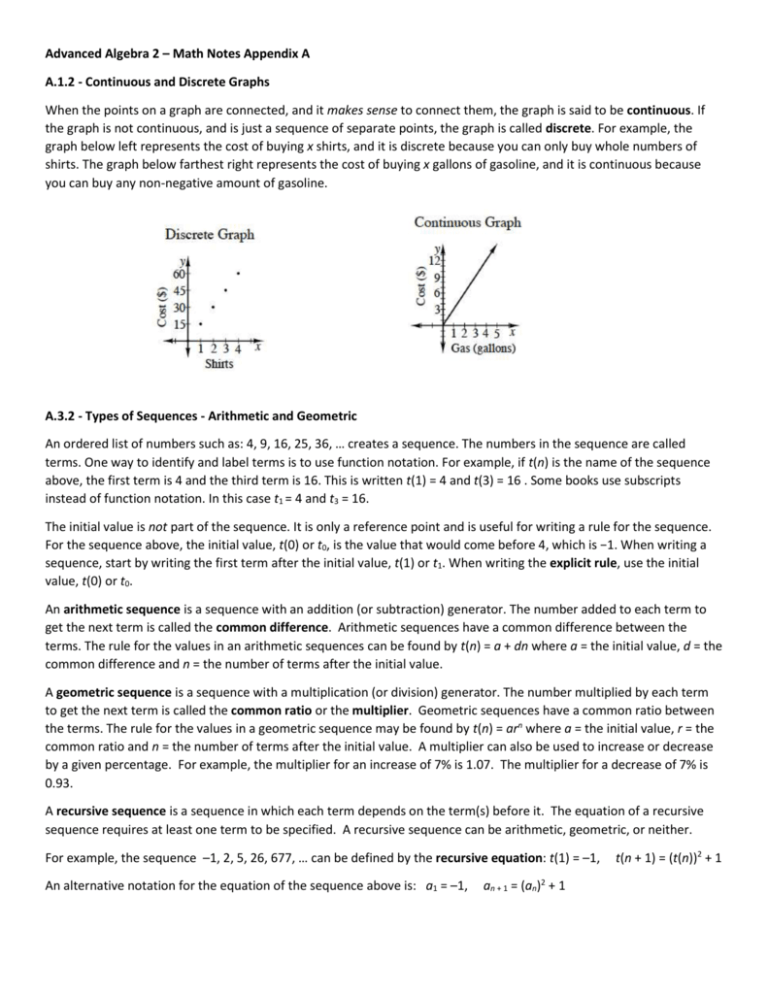
Advanced Algebra 2 – Math Notes Appendix A A.1.2 - Continuous and Discrete Graphs When the points on a graph are connected, and it makes sense to connect them, the graph is said to be continuous. If the graph is not continuous, and is just a sequence of separate points, the graph is called discrete. For example, the graph below left represents the cost of buying x shirts, and it is discrete because you can only buy whole numbers of shirts. The graph below farthest right represents the cost of buying x gallons of gasoline, and it is continuous because you can buy any non-negative amount of gasoline. A.3.2 - Types of Sequences - Arithmetic and Geometric An ordered list of numbers such as: 4, 9, 16, 25, 36, … creates a sequence. The numbers in the sequence are called terms. One way to identify and label terms is to use function notation. For example, if t(n) is the name of the sequence above, the first term is 4 and the third term is 16. This is written t(1) = 4 and t(3) = 16 . Some books use subscripts instead of function notation. In this case t1 = 4 and t3 = 16. The initial value is not part of the sequence. It is only a reference point and is useful for writing a rule for the sequence. For the sequence above, the initial value, t(0) or t0, is the value that would come before 4, which is −1. When writing a sequence, start by writing the first term after the initial value, t(1) or t1. When writing the explicit rule, use the initial value, t(0) or t0. An arithmetic sequence is a sequence with an addition (or subtraction) generator. The number added to each term to get the next term is called the common difference. Arithmetic sequences have a common difference between the terms. The rule for the values in an arithmetic sequences can be found by t(n) = a + dn where a = the initial value, d = the common difference and n = the number of terms after the initial value. A geometric sequence is a sequence with a multiplication (or division) generator. The number multiplied by each term to get the next term is called the common ratio or the multiplier. Geometric sequences have a common ratio between the terms. The rule for the values in a geometric sequence may be found by t(n) = arn where a = the initial value, r = the common ratio and n = the number of terms after the initial value. A multiplier can also be used to increase or decrease by a given percentage. For example, the multiplier for an increase of 7% is 1.07. The multiplier for a decrease of 7% is 0.93. A recursive sequence is a sequence in which each term depends on the term(s) before it. The equation of a recursive sequence requires at least one term to be specified. A recursive sequence can be arithmetic, geometric, or neither. For example, the sequence –1, 2, 5, 26, 677, … can be defined by the recursive equation: t(1) = –1, An alternative notation for the equation of the sequence above is: a1 = –1, an + 1 = (an)2 + 1 t(n + 1) = (t(n))2 + 1
